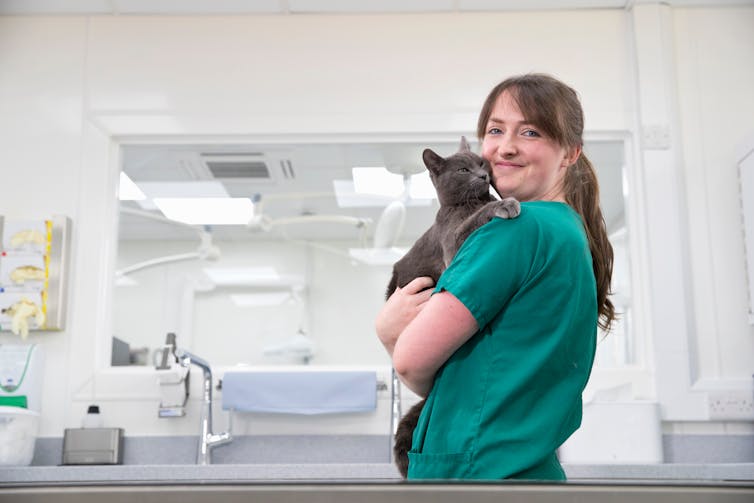Source: – By Hung Nguyen-Viet, Program Leader (ai), HEALTH at ILRI / CGIAR, International Livestock Research Institute
The world is facing daunting health challenges with the rise of zoonotic diseases – infections that are transmissible from animals to humans. These diseases – which include Ebola, avian flu, COVID-19 and HIV – show how the health and wellbeing of humans, animals and ecosystems are closely connected.
Zoonotic diseases have become more and more common due to factors such as urbanisation, deforestation, climate change and wildlife exploitation. These dangers are not limited by borders: they are global and demand a coordinated response.
By looking at health holistically, countries can address the full spectrum of disease control – from prevention to detection, preparedness, response and management – and contribute to global health security.
The World Health Organization has a basis for such an approach: One Health. This recognises the interdependence of the health of people, animals and the environment and integrates these fields, rather than keeping them separate.
I lead the health programme at the International Livestock Research Institute, where we are looking for ways to effectively manage or eliminate livestock-related diseases, zoonotic infections and foodborne illnesses that disproportionately affect impoverished communities.
My work focuses on the link between health and agriculture, food safety, and infectious and zoonotic diseases.
For example in Kenya we are part of an initiative of the One Health Centre in Africa to roll out canine vaccination and have so far vaccinated 146,000 animals in Machakos county.
In Ethiopia and Vietnam we worked in a programme to improve the hygiene practices of butchers in traditional markets.
In another project we work in 11 countries to strengthen One Health curricula in universities.
The lessons from the One Health projects implemented with partners across Asia and Africa are that there’s an urgent need for action on three fronts. These are: stronger cross-sectoral collaboration; greater engagement with policymakers to translate research findings into actionable strategies; and the development of adaptable and context-specific interventions.
But, having been active in this area for the last decade, I am impatient with the slow pace of investment. We know that prevention is better than cure. The cost of prevention is significantly lower than that of managing pandemics once they occur. Urgent steps, including much higher levels of investment, need to be taken.
What’s in place
In 2022 the World Health Organization, the Food and Agriculture Organisation, the United Nations Environment Programme and the World Organisation for Animal Health developed a joint One Health plan of action. They identified key areas to respond more efficiently to health threats. These included:
-
Reducing risks from emerging and re-emerging zoonotic epidemics. Actions include, for example, tightening regulations around farming and trade in wildlife and wild animal products.
-
Controlling and eliminating endemic, zoonotic, neglected tropical and vector-borne diseases by understanding the attitudes and knowledge of communities bearing the greatest burdens of these diseases. And boosting their capacity to fight them.
-
Strengthening action against food safety risks by monitoring new and emerging foodborne infections.
-
Curbing the silent pandemic of antimicrobial resistance, one of the top 10 global public health threats facing humanity.
Other collaborations include the Prezode (Preventing Zoonotic Disease Emergence) initiative to research all aspects of diseases of animal origin. This was launched in 2021 by French president Emmanuel Macron.
The Africa One Health University Network operates in ten African countries to address One Health workforce strengthening in Africa.
One Health has gained traction globally. But there’s still a great deal to be done.
The cost of inaction
According to a 2022 World Bank estimate, preventing a pandemic would cost approximately US$11 billion per year, while managing a pandemic can run up to US$31 billion annually. So the investment return of 3:1 is an important reason to call for investment in One Health.
The Pandemic Fund was launched in November 2022 by leaders of the Group of 20 nations and hosted by the World Bank Group to help low- and middle-income countries prepare better for emerging pandemic threats. US$885 million has been awarded to 47 projects to date through the two rounds in the last three years.
However, relative to the US$11 billion per year required for prevention, this investment is modest. Urgent investment in One Health needs to be made by countries themselves, in particular low- and middle-income countries.
The last two World One Health congresses (in Singapore in 2022, and in Cape Town in 2024) called for investment in One Health. There were also calls for investment in One Health at regional level to prevent zoonotic diseases and the next pandemic.
At the 78th World Health Assembly in Geneva, member states of the World Health Organization (WHO) formally adopted by consensus the world’s first Pandemic Agreement. The landmark decision culminates more than three years of intensive negotiations launched by governments in response to the devastating impacts of the COVID-19 pandemic.
This is major global progress in One Health and disease prevention.
But the lessons of COVID-19 have shown us that the cost of inaction is incalculable in terms of lives lost, economic turmoil and societal disruption. To date, there have been over 777 million cases of COVID-19, including more than 7 million deaths worldwide.
According to estimates by the International Monetary Fund, COVID will have caused a cumulative production loss of US$13.8 trillion by 2024.
The choice is clear: invest today to prevent tomorrow’s pandemics, or pay a heavy price in the future.
![]()
Hung Nguyen-Viet does not work for, consult, own shares in or receive funding from any company or organisation that would benefit from this article, and has disclosed no relevant affiliations beyond their academic appointment.
– ref. Preventing the next pandemic: One Health researcher calls for urgent action – https://theconversation.com/preventing-the-next-pandemic-one-health-researcher-calls-for-urgent-action-255229









